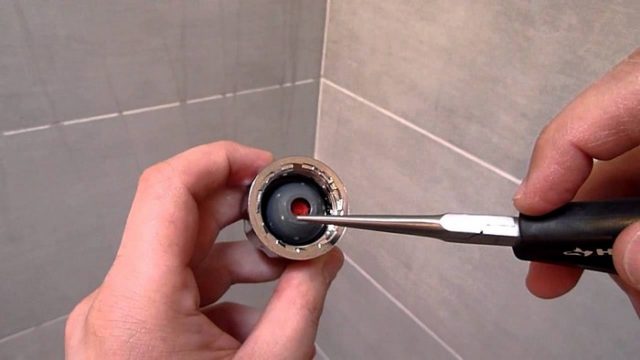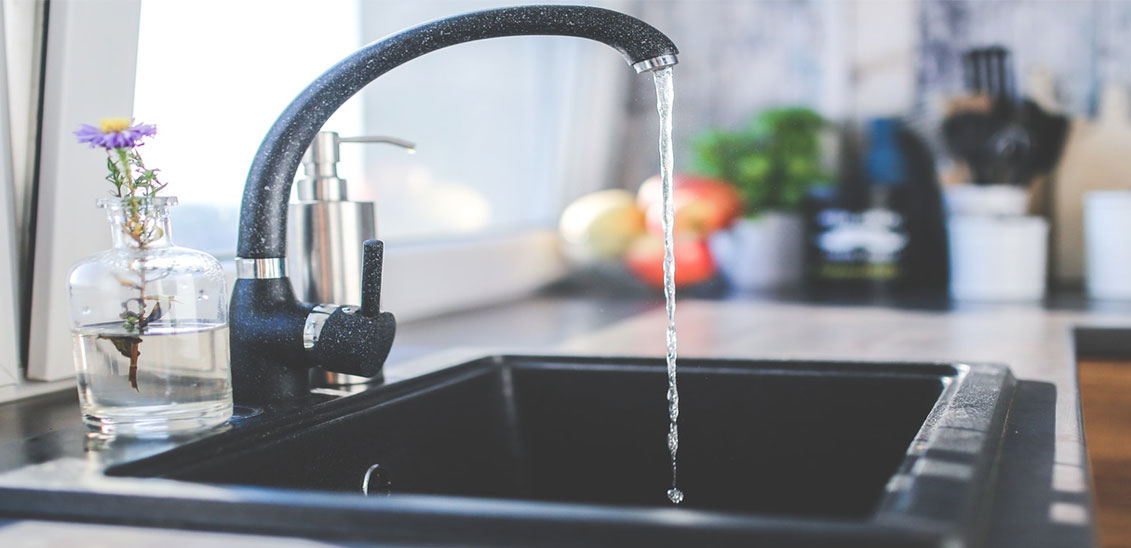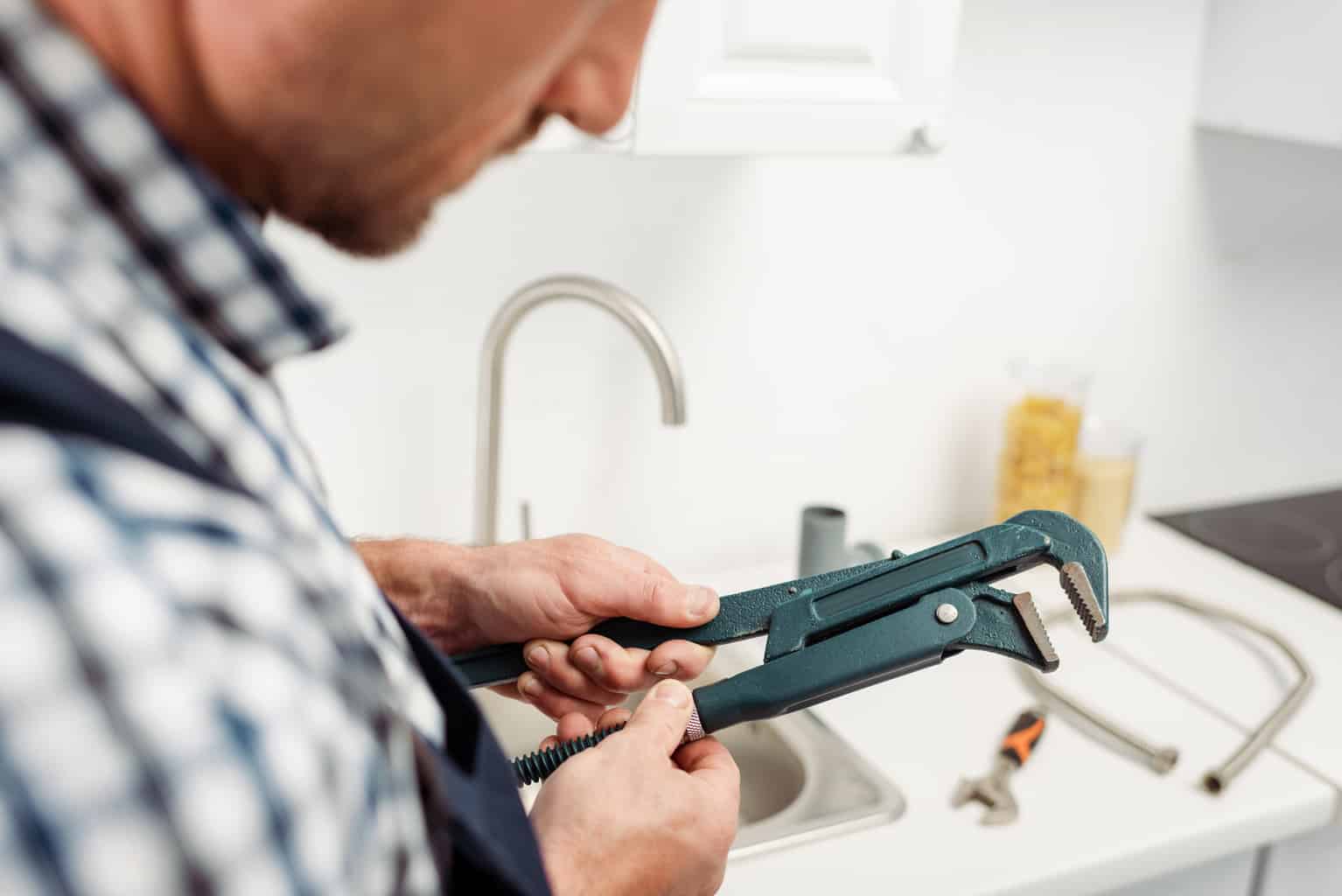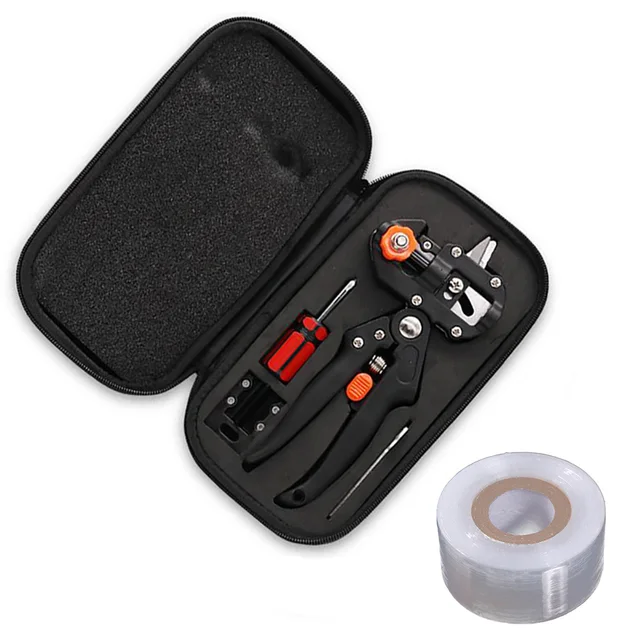Common Symptoms of Loss of Hot Water Pressure in the Kitchen Sink
Experiencing a loss of hot water pressure in your kitchen sink can be frustrating. It can disrupt your daily routine and make tasks like washing dishes or preparing meals more challenging. Identifying the signs of this issue is crucial to address it effectively. Let’s learn the common symptoms that indicate a loss of hot water pressure in the kitchen sink.
Slow Flow: One of the first signs of a decrease in hot water pressure is a slow flow of water from the kitchen sink faucet. You may notice that it takes longer to fill a pot or a sink, or the water stream may appear weaker than before. Pay attention to this symptom as it can help you diagnose the underlying cause.
Inconsistent Temperature: Another common symptom is an inconsistent temperature of the hot water coming out of the kitchen sink faucet. You may notice that the water fluctuates between hot and cold, making it difficult to use for tasks that require a steady supply of hot water. This inconsistency can be a result of a loss of hot water pressure in the system.
Reduced Pressure in Other Fixtures: If you’re experiencing a loss of hot water pressure in the kitchen sink, it’s worth checking other fixtures in your home. If you notice a decrease in hot water pressure in other areas, such as the bathroom or shower, it could indicate a larger issue with your hot water system.
Noisy Pipes: Unusual noises coming from the pipes when you turn on the hot water in your kitchen sink can also be a sign of decreased hot water pressure. Banging, rattling, or whistling sounds may indicate that there is a blockage or restriction in the pipes, resulting in reduced water flow.
Delayed Response: When you turn on the hot water faucet in your kitchen sink, you may notice a delayed response before the water starts flowing. This delay can be a result of decreased hot water pressure in the system. Pay attention to any changes in the time it takes for the water to come out when you open the faucet.
Uneven Distribution: If you find that the hot water pressure is unevenly distributed in your kitchen sink, with some areas receiving more pressure than others, it could indicate a loss of hot water pressure. This can make tasks like washing dishes or rinsing vegetables more challenging and time-consuming.

Understanding the Factors Behind a Decrease in Hot Water Pressure
Experiencing a decrease in hot water pressure in your kitchen sink can be frustrating. To address this issue effectively, it’s important to understand the potential causes. We will discuss the factors behind a decrease in hot water pressure and how they can affect your kitchen sink.
Sediment Buildup in the Pipes: One common cause of decreased hot water pressure is the accumulation of sediment in the pipes. Over time, minerals and debris can build up, restricting the flow of water. Sediment buildup is often a result of hard water, which contains high levels of minerals such as calcium and magnesium.
Faulty Pressure Regulator: A malfunctioning pressure regulator can also lead to a decrease in hot water pressure. The pressure regulator is responsible for maintaining consistent water pressure throughout your home. If it is not functioning properly, it can affect the hot water pressure in your kitchen sink.
Clogged Faucet Aerator: The faucet aerator is a small mesh screen located at the end of the faucet spout. It helps regulate the flow of water and also filters out debris. If the faucet aerator becomes clogged with mineral deposits or debris, it can restrict the flow of hot water, resulting in decreased pressure.
Aging Water Heater: An aging water heater can contribute to a decrease in hot water pressure. Over time, sediment can accumulate in the tank, affecting its efficiency and the overall flow of hot water. If your water heater is old and showing signs of wear, it may be time to consider a replacement.
Pipe Blockages: Blockages in the pipes can significantly impact hot water pressure. These blockages can be caused by a variety of factors, including mineral buildup, debris, or even the growth of tree roots in the pipes. Identifying and removing these blockages is crucial to restore proper hot water pressure.
Plumbing Leaks: Undetected plumbing leaks can also cause a decrease in hot water pressure. If there is a leak in the hot water line leading to your kitchen sink, it can result in reduced pressure. Inspecting your plumbing system for any signs of leaks, such as water stains or dripping sounds, is important to prevent further damage.
How to Inspect and Troubleshoot the Kitchen Sink’s Hot Water Pressure
If you’re experiencing a decrease in hot water pressure in your kitchen sink, it’s important to check the faucet and its components to identify and troubleshoot the issue. We will guide you through the process of inspecting and troubleshooting the kitchen sink’s hot water pressure to help you restore optimal performance.
Remove the Aerator: The first step in checking the faucet is to remove the aerator. The aerator is a small mesh screen located at the end of the faucet spout. Unscrew it carefully using pliers or by hand. Inspect the aerator for any debris or mineral buildup that may be obstructing the flow of hot water.
Clean the Aerator: If you notice any buildup on the aerator, clean it thoroughly to remove any debris or minerals. Soak the aerator in vinegar or a descaling solution to dissolve the buildup. Use a small brush or toothbrush to scrub away any remaining residue. Rinse the aerator thoroughly and reattach it to the faucet.
Check the Shut-Off Valves: Next, check the shut-off valves under the sink. Ensure that they are fully open and not partially closed, as this can restrict the flow of hot water to the faucet. Turn the valves clockwise and then counterclockwise to ensure they are fully open.
Inspect the Supply Hoses: Inspect the supply hoses that connect the faucet to the hot water supply. Look for any signs of leaks, such as water stains or wetness. Tighten any loose connections or replace damaged hoses if necessary.
Test the Hot Water Pressure: Turn on the hot water faucet and observe the flow of water. If the hot water pressure is still low, try turning off the hot water valve under the sink and disconnecting the hot water supply hose. Place the end of the hose in a bucket or container and turn on the hot water valve. If the water flow is strong, the issue may lie within the faucet itself.
Call a Professional: If you have followed these troubleshooting steps and are still experiencing a decrease in hot water pressure, it may be time to call a professional plumber. They will have the expertise and tools to diagnose and repair any underlying issues with the faucet or hot water system.

Possible Plumbing Problems That Could Affect Hot Water Pressure
When experiencing a decrease in hot water pressure in the kitchen sink, it’s important to consider whether the issue is related to plumbing problems. Exploring possible plumbing issues can help you identify the root cause and take appropriate action. Let’s find out common plumbing problems that could affect hot water pressure in your kitchen sink.
- Partially Closed Valves: One common plumbing issue that can affect hot water pressure is partially closed valves. The shut-off valves under the sink control the flow of hot water to the faucet. If these valves are not fully open, it can restrict the flow of hot water and result in decreased pressure. Ensure that the valves are fully open to eliminate this potential issue.
- Corroded or Blocked Pipes: Corrosion or blockages in the pipes can also contribute to a decrease in hot water pressure. Over time, pipes can develop rust or mineral deposits, restricting water flow. If you suspect corrosion or blockages, it’s advisable to contact a professional plumber who can assess the pipes and recommend appropriate solutions.
- Pressure Regulator Malfunction: A malfunctioning pressure regulator can affect hot water pressure throughout your home, including the kitchen sink. The pressure regulator is responsible for maintaining a consistent water pressure. If it is not functioning correctly, it can result in decreased hot water pressure. A plumber can inspect and replace the faulty pressure regulator if needed.
- Water Heater Issues: Hot water pressure problems can also be caused by issues with the water heater. Sediment buildup in the tank, a faulty heating element, or a malfunctioning thermostat can all affect hot water pressure. If you suspect your water heater is the culprit, it’s advisable to contact a professional plumber or a water heater specialist for diagnosis and repair.
- Undersized Pipes: In some cases, the hot water pressure issue may be due to undersized pipes. If the pipes leading to the kitchen sink are too small, they may not be able to handle the volume of hot water required, resulting in decreased pressure. A plumber can assess the pipe size and recommend appropriate solutions if necessary.

Addressing Mineral Buildup
Mineral buildups, such as limescale and sediment accumulation, is a common issue that can lead to a decrease in hot water pressure in the kitchen sink. Over time, minerals present in the water can deposit and accumulate in the hot water system, restricting the flow of water. Let’s discuss how to address mineral buildup and effectively deal with lime scale and sediment accumulation to restore hot water pressure.
- Vinegar Solution: One of the simplest and most cost-effective ways to address mineral buildup is by using a vinegar solution. Fill a container with equal parts white vinegar and water. Disconnect the hot water supply hose from the faucet and immerse the end in the vinegar solution. Let it soak for a few hours or overnight. This will help dissolve and loosen the limescale and sediment buildup. After soaking, rinse the hose thoroughly and reattach it to the faucet.
- Descaling Products: If the mineral buildup is severe, you may consider using descaling products specifically designed to remove lime scale and sediment from hot water systems. These products are available in hardware stores or online. Follow the instructions provided by the manufacturer to safely and effectively describe your hot water system. Remember to flush the system thoroughly with clean water after descaling.
- Water Softener: Installing a water softener can help prevent future mineral buildup in your hot water system. Water softeners remove minerals like calcium and magnesium from the water, reducing the likelihood of limescale and sediment accumulation. Consult with a water treatment specialist to determine the appropriate water softener system for your home and have it professionally installed.
- Regular Maintenance: Regular maintenance is crucial to prevent and address mineral buildup in the hot water system. Flushing the hot water tank annually or as recommended by the manufacturer can help remove sediment and prevent its accumulation. Additionally, inspecting and cleaning the faucet aerator and showerheads periodically can help prevent blockages and maintain optimal water flow.
- Water Filtration Systems: Consider installing a water filtration system that targets minerals and other impurities in the water. These systems can help reduce the amount of minerals entering your hot water system, minimizing the risk of mineral buildup. Consult with a water treatment specialist to determine the most suitable filtration system for your needs.
- Professional Assistance: If the mineral buildup in your hot water system is severe or persistent, it may be necessary to seek professional assistance. A plumber or water treatment specialist can inspect your hot water system, identify the extent of the mineral buildup, and recommend appropriate solutions. They may use specialized tools or techniques to remove stubborn lime scale and sediment from the system.

Impact of a Faulty or Aging Water Heater on Hot Water Pressure
The water heater plays a crucial role in providing hot water to your kitchen sink. A faulty or aging water heater can directly impact hot water pressure, leading to a decrease in performance. We will examine the role of the water heater and explore how a malfunctioning or aging unit can affect hot water pressure in your kitchen sink.
- Sediment Accumulation: Over time, sediment can accumulate in the bottom of the water heater tank. This sediment is primarily composed of minerals that naturally exist in the water supply. As sediment builds up, it can reduce the available space for hot water in the tank, resulting in decreased hot water pressure. Flushing the water heater annually can help remove sediment and maintain optimal performance.
- Malfunctioning Heating Element: The heating element in an electric water heater or the burner assembly in a gas water heater is responsible for heating the water. If the heating element or burner assembly malfunctions, it can affect the water heater’s ability to heat water efficiently, leading to a decrease in hot water pressure. A professional plumber should be contacted to diagnose and repair or replace the faulty component.
- Thermostat Issues: The thermostat in a water heater controls the temperature of the hot water. If the thermostat is not functioning properly, it can cause the water heater to heat the water to a lower temperature than desired. This can result in reduced hot water pressure as the water is not reaching the desired temperature. A plumber can inspect and recalibrate or replace the faulty thermostat as needed.
- Aging Tank: Water heaters have a limited lifespan, typically around 10 to 15 years. As the tank ages, it may develop corrosion or leaks, leading to decreased hot water pressure. If your water heater is nearing the end of its lifespan and exhibiting signs of wear, such as rust or leaks, it is advisable to consider replacing it to ensure optimal hot water performance.
- Insufficient Tank Size: The size of the water heater tank should be appropriate for the household’s hot water needs. If the tank is undersized for the demand, it can result in decreased hot water pressure as the tank struggles to keep up with the demand. Consulting with a professional plumber can help determine the appropriate tank size for your household’s hot water requirements.
- Pressure Relief Valve Issues: The pressure relief valve is an essential safety feature of a water heater. It releases excess pressure to prevent the tank from bursting. If the pressure relief valve is faulty or incorrectly set, it can result in inconsistent hot water pressure. A plumber should be consulted to inspect and repair or replace the pressure relief valve if necessary.

Easy fix for low water pressure in kitchen sink or bathroom sink – YouTube

If you have to use inside sink for temperature controlled water – YouTube

Patent US20050044625 – Apparatus for controlling the temperature of the water in a kitchen sink

Party dress, children party dresses, women party dresses, prom dresses, Baby Dresses, Bridesmaid

Party dress, children party dresses, women party dresses, prom dresses, Baby Dresses, Bridesmaid

Party dress, children party dresses, women party dresses, prom dresses, Baby Dresses, Bridesmaid

Party dress, children party dresses, women party dresses, prom dresses, Baby Dresses, Bridesmaid

Party dress, children party dresses, women party dresses, prom dresses, Baby Dresses, Bridesmaid

Related Posts:
- Kitchen Sink With Towel Bar
- Kitchen Sinks Okc
- White Granite Undermount Kitchen Sinks
- Chrome Kitchen Sink Taps
- Kitchen Sink Wire Rinse Basket
- Belle Foret Apron Front Kitchen Sink
- Porcelain Vs Ceramic Kitchen Sink
- Welcome To My Kitchen Sink
- Vintage Kitchen Sink
- Long Narrow Kitchen Sink